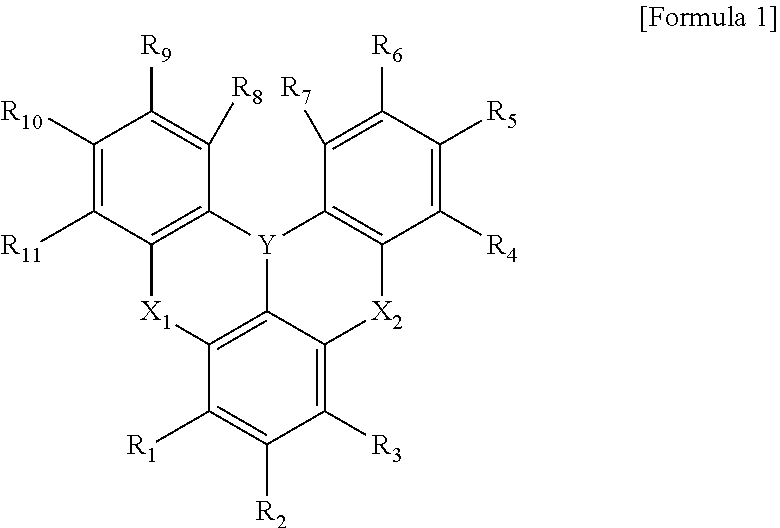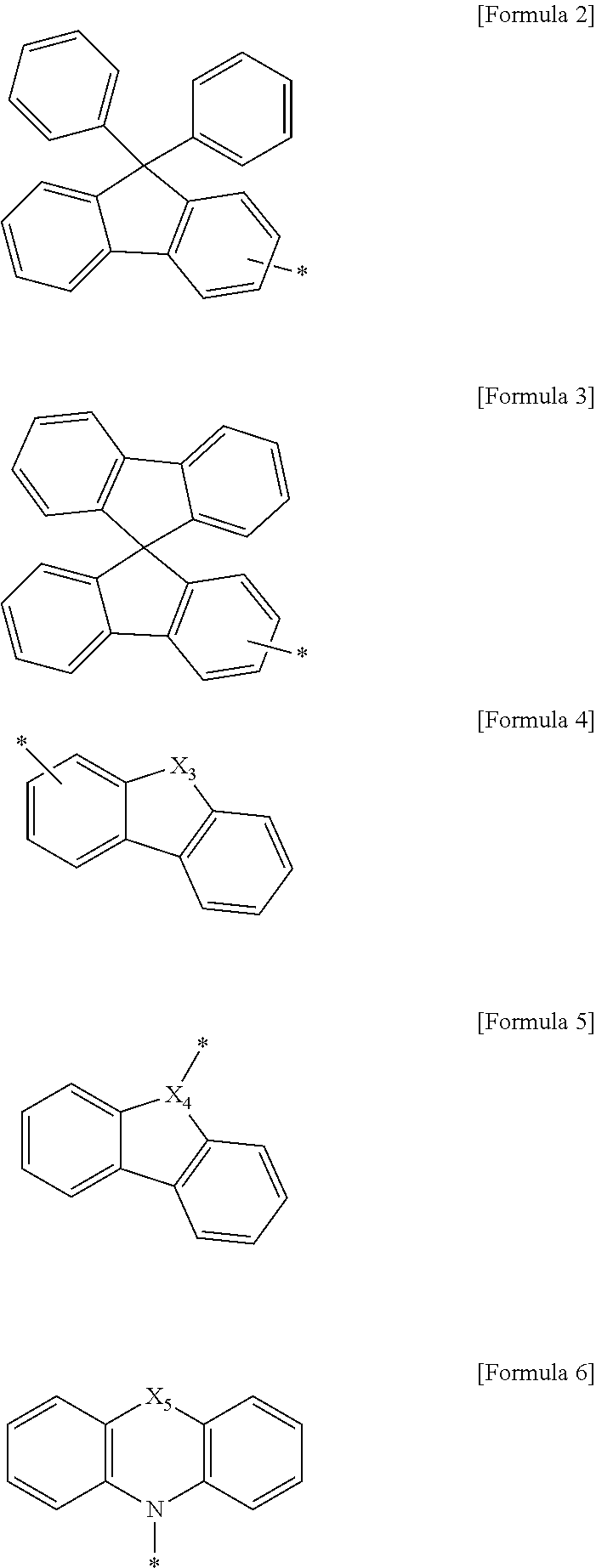Organic compound and organic electroluminescent device comprising the same
a technology of organic compound and electroluminescent device, which is applied in the direction of organic compound, luminescent composition, organic chemistry, etc., can solve the problems of reducing the efficiency of blue, difficult to use a deep blue area, and inability to manufacture devices that use pure blue light, etc., to achieve low driving voltage, high efficiency, and low doping area
- Summary
- Abstract
- Description
- Claims
- Application Information
AI Technical Summary
Benefits of technology
Problems solved by technology
Method used
Image
Examples
synthesis example 1
[0080]
[0081]After 10.6 g (20 mmol) of Starting Material 1 was dissolved in tert-butylbenzene (250 ml), the resulting solution was cooled to 0° C. 24.7 ml (42 mmol) of a 1.7 M tert-butyllithium solution (in pentane) was added thereto under a nitrogen atmosphere, and the resulting solution was stirred at 60° C. for 2 hours.
[0082]Thereafter, the reactant was again cooled to 0° C., 4.0 ml (42 mmol) of BBr3 was added thereto, and then the resulting solution was stirred at room temperature for 0.5 hour. The reactant was again cooled to 0° C., 7.3 ml (42 mmol) of N,N-diisopropylethylamine was added thereto, and then the resulting solution was stirred at 60° C. for 2 hours.
[0083]The reactant was cooled to room temperature, and an organic layer was extracted using ethyl acetate and water. After the solvent of the extracted organic layer was removed, the residue was purified using a silica gel column chromatography (DCM / hexane) method. Thereafter, the obtained product was recrystallized and p...
synthesis example 2
[0085]
[0086]1.2 g of Compound 70 was obtained with a yield of 10.2% by performing an experiment in the same manner as in Synthesis Example 1, except that 12.1 g of Starting Material 70 was used instead of Starting Material 1.
[0087]MS (MALDI-TOF) m / z: 579 [M]+
synthesis example 3
[0088]
[0089]1.6 g of Compound 92 was obtained with a yield of 15.0% by performing an experiment in the same manner as in Synthesis Example 1, except that 11.4 g of Starting Material 92 was used instead of Starting Material 1.
[0090]MS (MALDI-TOF) m / z: 545 [M]+
PUM
| Property | Measurement | Unit |
|---|---|---|
| atomic number | aaaaa | aaaaa |
| temperature | aaaaa | aaaaa |
| thickness | aaaaa | aaaaa |
Abstract
Description
Claims
Application Information
 Login to View More
Login to View More - R&D
- Intellectual Property
- Life Sciences
- Materials
- Tech Scout
- Unparalleled Data Quality
- Higher Quality Content
- 60% Fewer Hallucinations
Browse by: Latest US Patents, China's latest patents, Technical Efficacy Thesaurus, Application Domain, Technology Topic, Popular Technical Reports.
© 2025 PatSnap. All rights reserved.Legal|Privacy policy|Modern Slavery Act Transparency Statement|Sitemap|About US| Contact US: help@patsnap.com



